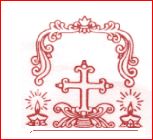Speech by Nevin Pothen
Glory be to the Father, Son and Holy Spirit one true God; Amen.
Respected Achen, teachers, parents and my dear friends in Christ, today we celebrate the first of Jesus’ miracles which is the turning of water into wine at the Wedding at Canna taken from the Gospel of St. John 2:1-11. Many of us have heard this story many times as children and mainly know that Jesus performed a miracle by turning water into the best wine. Even though many of us know the story, there are other minute details that many of us don’t know about. It’s important to know the meaning these details carry in order to understand the story in a whole new perspective.
Although none of the synoptic gospels record this event, mainstream Christian tradition holds that this is the first public miracle of Jesus. However in John’s gospel it has considerable symbolic importance: it is the first of the seven miraculous signs by which Jesus’s divine status is attested, and around which the gospel is structured.
While it may seem insignificant, there is crucial symbolism in this first miracle of Jesus. It was not a coincidence that the water Jesus transformed came from jars used for ceremonial washing. The water signified the Jewish system of purification, and Jesus replaced it with pure wine, representing his spotless blood that would wash away our sins.
This miracle, showing Jesus’ supernatural control over physical elements like water, marked the beginning of his public ministry. Like his other miracles, it benefited people in need. Not only did Jesus produce a large quantity of wine, but the quality of it astonished the banquet master. In the same way, Jesus pours his Spirit into us in abundance, giving us God’s best.
It is still a matter of discussion among theologians whether the story talks of an actual material transformation of water into wine, or of a spiritual allegory. Interpreted allegorically, the good news and hope implied by the story is in the words of the Governor of the Feast when he tasted the good wine, “Everyone serves the good wine first, and then the inferior wine, but you have kept the good wine until now” (John 2:10) . This could be interpreted by saying simply that it is always darkest before the dawn, but good things are on the way. However, the more usual interpretation is that this is a reference to the appearance of Jesus, whom St. John regards as being himself the good wine.
The miracle could also be viewed alongside Moses’ first public miracle of changing water (the Nile River) into blood. Since the miracles are quite similar, we can establish a symbolic link between Moses as the first savior of the Jews through their escape from Egypt and Jesus as the spiritual savior of all people.
The gospel account of Jesus being invited to a wedding, attending, and using his divine power to save the celebrations from disaster are taken as evidence of his approval for marriage and earthly celebrations.
We can see that this simple story that we all know and take for granted carries more meaning than we ever imagined. As we reach the beginning of the Great Lent, it’s important to understand the story in a new light so that we can use its meanings not only to help us fast and pray during the Great Lent, but during our daily lives as well.
Thank you and may God bless us all.




